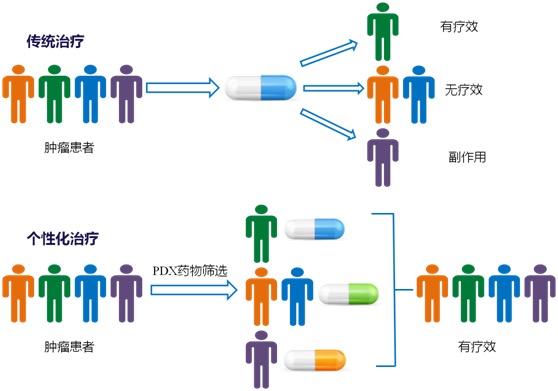

 Now Location:Home--News Center--Industry News
Now Location:Home--News Center--Industry News
HLA (Human Leucocyte Antigen), also known as human leukocyte antigen, is located on the short arm of human chromosome 6. It contains 224 loci within a range of 3600kb, each containing numerous alleles. It is currently the most complex genetic polymorphism system known in the human body, with tens of thousands of genetic polymorphisms. HLA molecules can be divided into three categories - HLA-I, II, and III genes, each containing multiple loci. HLA-I includes three types: A, B, and C, while HLA-II includes DP, DQ, and DR; The HLA between different human individuals exhibits polymorphism. HLA is closely related to the body's immune system. For example, HLA mismatch is the main cause of immune rejection after organ or bone marrow transplantation. In addition, HLA antigens are closely related to disease susceptibility, drug reactions, new drug development, immunotherapy, and more. Therefore, HLA typing has a wide range of applications in fields such as transplant medicine, immune disease diagnosis, tumor drug development, and cellular immunotherapy.
1、 Application of HLA typing and transplantation
Human Leukocyte Antigen (HLA) is a major histocompatibility complex in humans, serving as a marker for immune cell recognition among different individuals and possessing significant biological functions. Due to its ability to reflect the degree of tissue compatibility between recipients of organ transplantation and donors providing transplanted organs, HLA is closely related to rejection reactions after organ transplantation, hence it is also referred to as a transplant antigen. As is well known, the main antigens that determine the success or failure of transplantation are as follows: primary histocompatibility antigens, secondary histocompatibility antigens, ABO blood group antigen system, and other tissue-specific antigens. Among the three major histocompatibility antigens HLA, class I and II molecules are the primary antigens that trigger transplant rejection reactions. Transplantation matching can mainly be used for organ transplantation, umbilical cord blood transplantation, and hematopoietic stem cell transplantation.
Both organ transplantation and umbilical cord blood transplantation can use HLA genotyping to achieve recipient donor matching. The higher the HLA compatibility between recipients and donors, the lower the incidence of rejection, and the higher the success rate of transplantation, long-term survival rate of transplanted organs, and the effectiveness of umbilical cord blood transplantation. On the contrary, rejection reactions are more likely to occur, thereby reducing the success rate and survival rate of transplantation. Therefore, a good HLA matching between the recipient and the donor is of great clinical significance in reducing rejection reactions and prolonging the functional survival time of the graft after surgery.
Similarly, hematopoietic stem cell transplantation, which requires higher transplantation requirements, is currently the most fundamental treatment option for various malignant blood diseases. The pre transplantation matching of hematopoietic stem cells refers to whether the human leukocyte antigen (HLA) of the donor and recipient match. Accurate HLA typing combined with gene sequencing can reduce graft-versus-host response (GVHD) and improve the success rate of transplantation. At present, clinical testing mainly uses PCR based methods for initial screening, sequencing for review and selection of the best. Methods that can achieve absolute high typing of HLA include Sanger sequencing based typing (SBT) and second-generation sequencing technology (NGS).
2、 Research on the correlation between HLA typing and diseases, as well as adverse drug reactions
The correlation between HLA and diseases and drug use research is booming, and the US FDA updates data on new HLA loci and related drug reactions every year. For example, our independently developed HLA-B * 1502, HLA-B * 5801 and other test kits belong to precision drug guidance. Choosing a specific location of HLA for correlation research on specific diseases has also become a popular research project in research institutions, hospitals, and other institutions.
According to statistics from the United Nations Health Organization, one-third of global deaths occur due to irrational drug use, rather than the disease itself. The number of hospitalized patients in China due to adverse drug use at home is also increasing year by year, and adverse drug reactions can exhibit their unique severity and harmfulness. Therefore, using genetic testing technology for personalized medication and screening the most suitable drugs is an effective way to avoid risks and reduce adverse reactions. At present, many different diseases such as ankylosing spondylitis, rheumatoid arthritis, celiac disease, multiple sclerosis, etc. have also been extensively discussed in scientific research projects regarding the high correlation between diseases and HLA loci. Among them, the most classic clinical application is the auxiliary diagnosis of HLA-B * 27 gene testing in ankylosing spondylitis.
3、 HLA typing and development of tumor drugs and vaccines
With the continuous progress of science, human understanding and requirements for clinical drug therapy have changed. Cancer has always been a hot topic in human research, and in recent years, various targeted drugs have emerged one after another. There are significant individual differences in the pharmacokinetics, drug effects, and toxicity of tumor chemotherapy drugs in tumor patients. The research results of the Human Genome Project indicate that the DNA of different individuals is 99.9% the same, with only a 0.1% difference. Most of these differences are single nucleotide polymorphisms (SNPs). Pharmacogenetic research has found that small differences in genome sequences can significantly affect the sensitivity and toxicity of different individuals to drug therapy. Each individual's unique HLA tissue type strongly influences their immune response to external factors such as vaccines, drugs, or allergens. Therefore, behind these studies, pharmaceutical companies need to conduct HLA typing for specific patient specific genotypes when developing new tumor drugs and vaccines. They need to search for specific genotypes related to drug immunotherapy, determine the effectiveness of the corresponding genotypes for specific tumor development drugs, and then confirm the targeted medication for personalized and specific immunotherapy to avoid ineffective use of broad-spectrum anti-tumor drugs and delay the best time for patient treatment. HLA specific genotype peptides, such as HLA-A * 0201, are also frequently used in vaccine development to improve binding efficiency and therapeutic effectiveness.
4、 The correlation between PDX model and HLA
In recent years, sequencing and targeted therapy have made breakthrough progress in the treatment of tumor diseases. However, traditional tumor treatment methods have not brought better prognosis to patients, and the update and development of anti-tumor drugs are very slow. Therefore, the preclinical drug trials of tumor diseases in the field of molecular biology still have a long way to go.

The mouse tumor model has always been the most basic model for in vivo experiments in tumor research. Unlike the CDX models that have extensively experimented with transplanting tumor cells from patients into mice in the past, the current focus of tumor research is to establish PDX models, namely the patient derived xenograft model (PDX model), which refers to cutting off tumor tissue from surgical patients, inoculating it into immunodeficient mice, and further passaging after tumor formation in mice for future research. The PDX model can effectively maintain the heterogeneity of tumors and preserve the histological and genetic characteristics of patients. Therefore, in the cultivated PDX model, the immune response to detecting and developing new drugs is analyzed through HLA sequencing to identify the most suitable anti-tumor drugs for a specific population of tumor patients. The PDX model can also help scientists better study tumor heterogeneity and genetic complexity, delve deeper into tumor mechanisms and discover potential therapeutic targets. It can even help predict patients' possible reactions to therapeutic drugs, including efficacy, toxic side effects, absorption levels, etc. Compared with traditional CDX animal models of tumor cells, the PDX model combined with HLA genotyping can be used to evaluate the clinical application potential of some treatment methods, providing a good analysis for preclinical drug testing and guiding individualized treatment of tumor patients in clinical practice. The PDX model, combined with clinical data, HLA genome map, and pharmacological data, can increase drug specificity and be applied to individualized treatment of tumor patients, improving the success rate of clinical treatment.
In addition to gradually adopting the PDX model for tumor drug screening, the high correlation between the PDX model and clinical practice can also guide clinical medication through pharmacological results. And it can monitor the biological characteristics of tumor genes such as expression patterns, mutations, drug reactions, and the structure of the tumor itself in real-time through PDX combined with HLA high-throughput sequencing technology. Therefore, the PDX model, which has a clinical relevance of up to 90%, has become an indispensable and important technical means in precision tumor medicine. At the same time, more and more pharmaceutical companies and researchers are also choosing the PDX model for drug efficacy evaluation experiments, conducting synchronous drug use experiments with clinical patients through the PDX model, and conducting corresponding retrospective experiments using the PDX model

The relevant applications of HLA typing have only been briefly explained in this article. With more understanding of the human genome group, HLA will definitely be applied in more medical fields. The Weihe team has been committed to HLA typing services and product development for 20 years in China, and has rich experience in HLA technology services. We have stable business and clinical experience in research drug development, vaccine development, and other fields, providing a large amount of HLA data analysis. In addition to providing relevant scientific analysis results, our team also provides technical services and support for HLA related topics and experimental design for transplantation, precision medicine, and partners involved in HLA typing. We provide various genetic typing detection reagents and related technical services such as SBT, qPCR, SSP, etc. We offer comprehensive and professional HLA typing products that can cover high, medium, and low resolution typing, fully realizing the multi-dimensional legal and multi resolution requirements of HLA, as well as diversified scientific research and clinical typing requirements. Weihe is working hand in hand with you to safeguard HLA research work.
